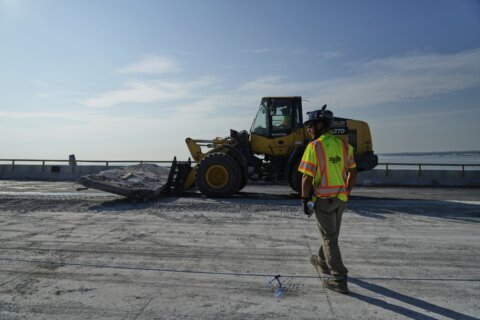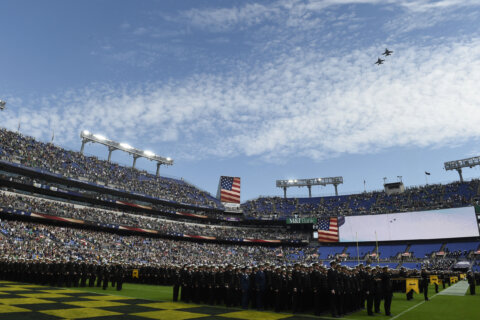This article was republished with permission from WTOP’s news partners at Maryland Matters. Sign up for Maryland Matters’ free email subscription today.
This content was republished with permission from WTOP’s news partners at Maryland Matters. Sign up for Maryland Matters’ free email subscription today.
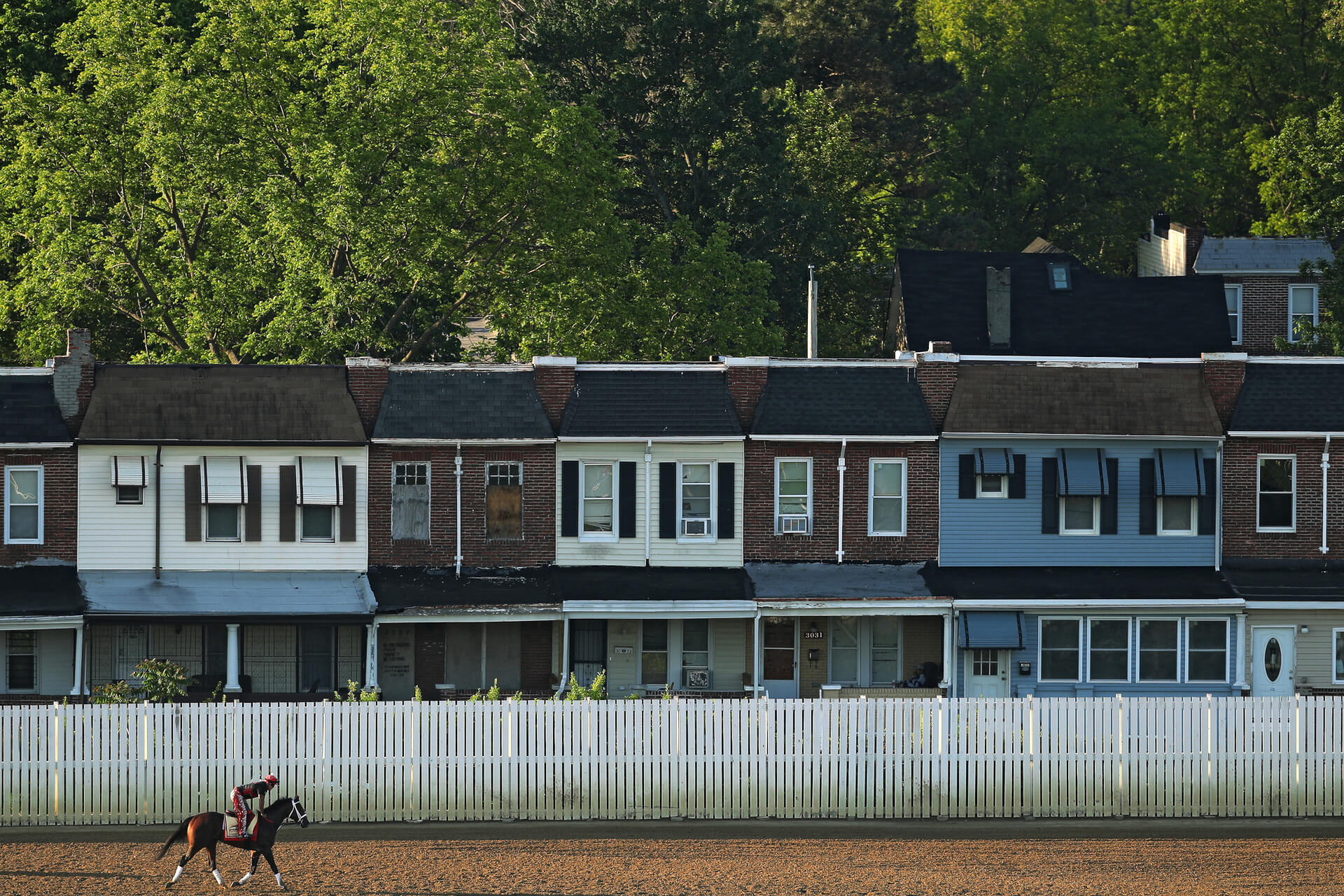
Stymied by skyrocketing costs that have nearly doubled the $375 million estimates for redeveloping Pimlico and Laurel Park race courses, Maryland officials and other interested parties are scrambling to develop an alternative plan that likely would involve shuttering one of the two horse tracks, sources say.
Unlike earlier schemes, where the 229-acre Laurel Park in Anne Arundel County was seen as the prime property for racing, attention is now more sharply focused on Pimlico Race Course in Baltimore — home of the nationally treasured and financially valuable Preakness Stakes — as the surviving track of the two.
Yet the smaller 140-acre Pimlico has forced stakeholders to look elsewhere for a location to build a new training facility and stalls for up to 450 horses, as well as find a buyer of the Laurel Park site for development, sources say. That buyer could be the state through its Maryland Economic Development Corporation (MEDCO), which studied the viability of the Laurel Park property last year, though any decisions or details are far from final.
Rising to the top of the list as an alternative site for the new training facility and track with as many as 1,150 horse stalls is the old U.S. Naval Academy Dairy Farm in Gambrills, an 857-acre parcel currently being leased by Anne Arundel County as parkland, sources say.
More than a decade ago, the Maryland Stadium Authority and others had looked at the old dairy farm as a tourist-destination horse park and agricultural center, but that idea ultimately was rejected because of the amount of traffic it would generate and other environmental concerns in rural Gambrills. The new concept, however, would require a more passive use of the land, with far less traffic and limited hours, sources said.
Three years after lawmakers in Annapolis first passed a bill authorizing $375 million in bonds for the revolving Racing and Community Development Financing Fund — $180 million to benefit Pimlico and $155 million to Laurel Park — the most recent plans are being floated as a way to break a stalemate that has paralyzed efforts to redevelop the tracks.
The discussions come as costs continue to increase, driven up by a combination of inflation, rising interest rates, supply chain issues and site redesigns. Little actual progress on the grand plan passed in 2020 has been made, outside of revision after revision to the original concept and note of the ever-rising costs.
Looking at ownership
Members of the Maryland Thoroughbred Horsemen’s Association, which represents owners and trainers, and Maryland Horse Breeders’ Association have made no secret they would like to see ownership of the tracks change hands. Some have even privately suggested creating a tax-exempt entity to take over Laurel Park by using MEDCO as the middle-man in a sale-leaseback deal that could allow the track’s for-profit owners to sell the property without shouldering a multimillion-dollar federal tax bill.
“Nothing is off the table,” said one racing industry insider.
Officials of the Maryland Stadium Authority, charged with oversight of the costly and ambitious scheme, have declined to comment on those particulars.

Alan M. Rifkin, the lawyer and lobbyist representing The Stronach Group, the Canada-based owner of the two tracks that now operates under the Maryland Jockey Club name, was more expansive.
“I will tell you without any hesitation, it is the most complex stadium [authority] project I have ever worked on by factors of multitudes,” said Rifkin, who has worked on five such deals.
Asked if Laurel Park could be closed permanently for racing, he said, “It’s possible. All those things are possible. All I can say is this, that every configuration, option and structure that we can think of collectively as a group, we are testing.”
That goes for an alternative training facility and the construction of new stalls somewhere other than Laurel Park, as well, he said.
“I can’t say that we’ve landed on any one that yet meets with the approvals of the very many stakeholders, but we’re trying,” Rifkin said.
Fiscal scrutiny
The behind-the-scenes machinations are occurring against the backdrop of the current session of the Maryland General Assembly, which must approve the Stadium Authority’s budget, including any changes to its earlier approval of the financing scheme for the track improvements three years ago and since.
Earlier this month, a damning legislative budget analysis of the track project was presented to two subcommittees in the Senate and House of Delegates, at a routine annual review of the Maryland Stadium Authority’s spending plan. It brought little reaction from lawmakers or the MSA officials who were present, though the difficulty of the situation was clear.
As part of the General Assembly’s budget deliberations, the Department of Legislative Services recommended that the legislature register its dissatisfaction with the lack of progress on the race track redevelopment by withholding $17 million for debt service on the bonds that would be held in savings for when the bonds sold.
Under the proposal, the money, which comes from Maryland Lottery and Gaming Control Agency each year, would only be released if the remaining seven of eight agreements and requirements for Pimlico are completed and signed by Sept. 30.
They are: the Jockey Club’s conveyance of Pimlico Race Course to Baltimore City; a development agreement for Pimlico, including plans for design and the construction during Preakness; a long-term operating agreement for Pimlico; a lease agreement associated with the Preakness; covenants and restrictions with the City of Baltimore; and a Maryland Racing Commission report on track safety. The two remaining agreements are with LifeBridge Health, owner of Sinai Hospital, immediately adjacent to Pimlico, one for conveyance of land needed for development of the track, and the other between MJC and LifeBridge dealing with covenants and restrictions.
If those requirements are not met, the money would revert to the General Fund, and the cost estimate for the redevelopment project would increase by that $17 million figure.
“Our issue is that this has taken too long for them to do this,” Patrick S. Frank, the budget analyst told the House Appropriations’ Subcommittee on Education and Economic Development during a Feb. 8 briefing. “This is to encourage the project to move along because we think time is not on its side. Inflation could go higher still.”
Withholding the money would clearly underscore the legislature’s impatience, though it would not quite be a 2-by-4 between the eyes to get the stakeholders’ attention.
“Certainly the legislative analyst’s report is something that we’re in support of,” outgoing Stadium Authority Chairman Thomas E. Kelso told the subcommittee after Frank’s testimony.
A twist to this year’s budget negotiations and direction on the racetracks is the size and makeup of the Stadium Authority’s board of directors. The board this year now includes two appointees by the General Assembly’s presiding officers, following a change in the law last year, and three new members appointed last week by Gov. Wes Moore (D), including the chair, Craig Thompson, a lawyer who headed his political campaign committee.
Complicating factors
Almost since its inception during the 2020 legislative session, the plan to redevelop the two tracks seemed to stall, subject to difficult negotiations between a variety of parties, chief among them, The Stronach Group.
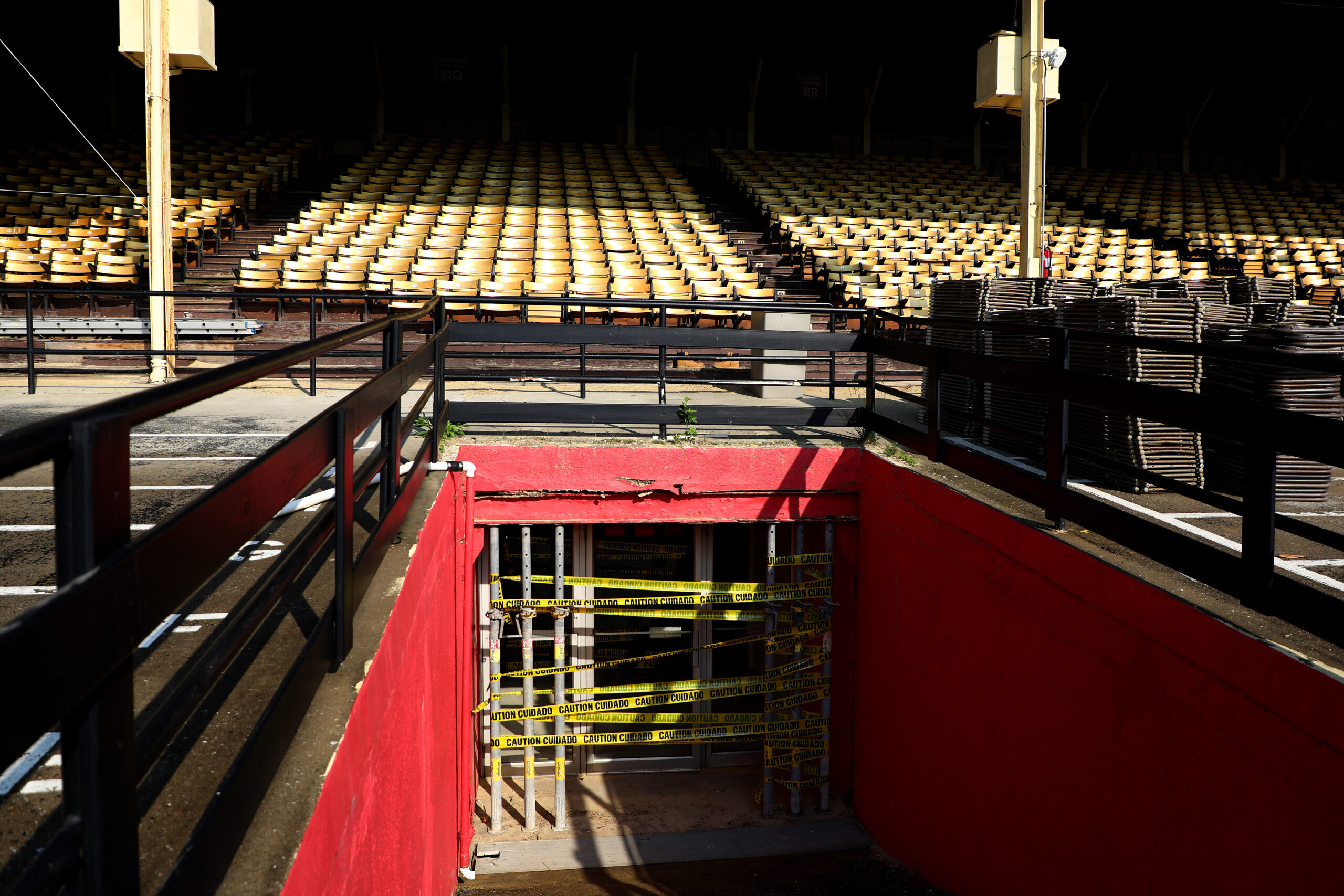
In the three-year interim, complicated land swaps and acquisitions were proposed, reconfigured designs were put forward and elaborate staging plans were concocted to maintain the two tracks’ total annual allotment of live racing days either at one track or the other during construction – expensive propositions all.
Meanwhile, inflation rose sharply, as did bond prices along with it, dramatically shrinking anticipated revenues to the state to pay for the deal and increasing the overall cost estimates by hundreds of millions of dollars — a shortfall that continues to grow. Supply chain issues also continue to plague the construction industry.
Complicating the matter even further — and perhaps the deal breaker — is a change in the federal tax code that would likely cost the Stronach Group significantly — an estimated $40 million — if it were to accept state money directly for improvements at Laurel Park.
“A perfect storm,” is how one Stadium Authority board member describes the setbacks and delays.
“What has changed is the challenges we’ve encountered at Laurel Park,” said Bill Cole, a new board member who has negotiated the deal for Baltimore City since the beginning.
The ancient facilities at both tracks have long shown signs of age requiring attention. Among them are the need to replace and expand dilapidated backstretch facilities, including stables and housing for track workers; demolition and replacement of the Pimlico grandstand; and replacement and reconfiguration of the Laurel Park track, in part because of past track safety issues.
“We have to modernize everything there. It’s as old as … Pimlico,” Cole said. “And in many ways, it’s even more challenged, because we’ve shoehorned … [700] to 900 horses into an area that needs to be completely scraped and rebuilt, and brought up to code with brand new facilities.”
The Maryland Jockey Club (MJC), the umbrella company owned by The Stronach Group, has been explicit with the Stadium Authority regarding the Laurel Park site.
“MJC indicated that their desire is to sell Laurel Park and receive compensation for the venue, adding a significant acquisition amount to the already over-budget facility,” the Maryland Stadium Authority wrote in earlier status reports mandated by the legislature, including the most recent, issued last month.
That is just one hitch of many in the way of getting the work done.
For example, no bond sales to pay for redevelopment of the tracks have taken place because those sales were contingent on agreements being signed and requirements met. Yet some of the negotiations involving multiple parties at both sites simply were never taken up. So far, only one of eight agreements or requirements has been signed for Pimlico. And the situation for Laurel Park was so bleak that the Stadium Authority did not even bother to go into detail in its reports to the legislature.
“Similar agreements will be required prior to proceeding with construction-related services at Laurel Park, but are not highlighted within this report given the uncertainties surrounding the advancement of the Laurel Park Racing Facility redevelopment at this time,” officials wrote last month.
In turn, construction at Pimlico — including demolition of the old grandstand — was supposed to begin no later than this summer, but that was dependent on first resolving outstanding issues at Laurel Park.
Delays increasing overall costs
Delaying the bond sales as interest rates have risen has cost more than $80 million in potential proceeds for the state over the projected yield, if the bonds been sold when the idea first surfaced, according to the legislative budget analyst.
For example, had the bonds been sold in December 2019, when the interest rate was 2.24 percent, the estimated proceeds would have been roughly $369 million; whereas if they been sold in December 2022, when the rate was 4.20 percent, the proceeds would have been an estimated $286 million, the analysis showed.
The shortfall has risen dramatically and is now projected to be between $160 million and $350 million, the analysis showed. If the $17 million set aside for debt service was stripped out of the budget for the next fiscal year, the shortfalls would then range from $177 million to $367 million.
Overall, that means the estimated redevelopment cost would now be between $535 million and $725 million, or $552 million to $740 million when the 2024 debt service payment is included.
At the Feb. 8 budget hearing, Appropriations Committee Chair Ben Barnes (D-Anne Arundel and Prince George’s) sat in and asked the Stadium Authority panel for any “context” they could offer on the state of the plan.
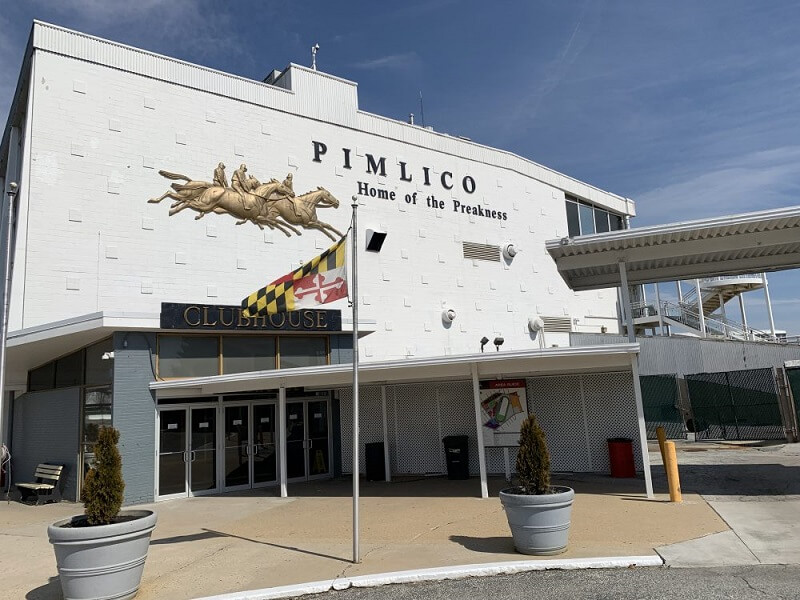
“Basically, the work has stopped at this point,” said Gary A. McGuigan, the Stadium Authority’s executive vice president for capital projects. “Major agreements have not been signed and executed.”
McGuigan explained that there are two major agreements for Pimlico that have effectively halted movement on the project, the first being an agreement for land transfer from the Maryland Jockey Club to the City of Baltimore. Though the agency is not part of those negotiations, he described them as “substantially apart.”
The second is the Stadium Authority’s development agreement with the Jockey Club. “Again, we’re pretty far apart,” he said. “We’re moving closer together, but it’s a long way to go.”
McGuigan told legislators he believed if the state moved forward with the redevelopment plan at this point without the signed agreements, “which we have the ability to do, even though we have a major funding gap at Laurel, we lose leverage.”
He said the Maryland Jockey Club had sent 94 pages of proposed covenants and restrictions to the city “probably 4-5 months ago,” and “the city has been digesting it.” He added that he expected a response soon.
A changing board
The two additional members of the once-five-member Maryland Stadium Authority board are Maggie McIntosh (D), former chair of the House Appropriations Committee, and Bill Cole, a partner in Margrave Strategies, an economic development consulting firm who was hired by then-Baltimore Mayor Bernard C. “Jack” Young (D) to negotiate the racetrack deal for the city.
Cole also is the former president and CEO of the quasi-public Baltimore Development Corp., the city’s economic development agency, a former Baltimore city councilman and former member of the House of Delegates, representing South Baltimore.
He did say that he would recuse himself from any vote involving a decision affecting Baltimore comes before the Stadium Authority board.
“They’re not in a decision-making role here in any way; so, I don’t feel like there’s a conflict,” he said. “But obviously, if there’s an action that comes before the board, I will recuse and not participate. It wouldn’t be appropriate.”
McIntosh and Cole were appointed by House Speaker Adrienne A. Jones (D-Baltimore County) and Senate President Bill Ferguson (D-Baltimore City), respectively.
In addition to Moore’s appointment of Craig Thompson as chair of the Stadium Authority, the governor named architect Lee Coplan and businesswoman Yolanda Maria Martinez to the board as part of his green bag nominees handed down Friday. Their appointments are subject to the advice and consent of the Maryland Senate.
“You know, I remain convinced today that we will find a way through this,” Cole said. “I do believe that there are solutions. I mean, we’re working through every possible scenario … working collaboratively to make certain that we leave no stone unturned on a viable solution.
“I would say at this point, you know, every scenario is being thoroughly vetted,” he said.

